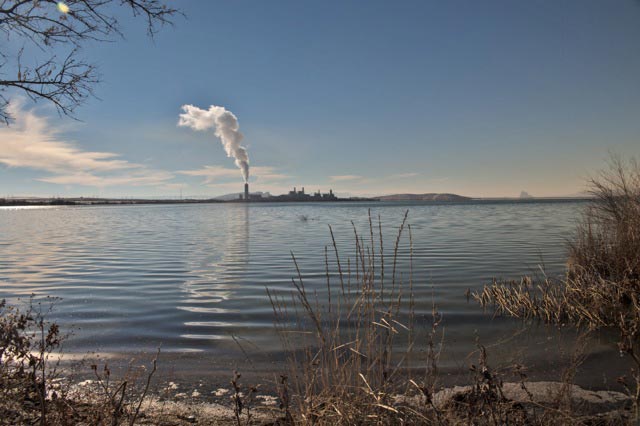
The future of energy development in New Mexico’s Four Corners region is at a crossroads. The San Juan Generating Plant is slated to shut down half of its coal-burning capacity in 2017 and a new energy replacement plan must be decided upon.
The Four Corners, where New Mexico, Arizona, Colorado, and Utah intersect, was dubbed a national energy sacrifice zone in a report by the National Academy of Sciences during the Nixon Administration. The area has been mined for coal and uranium and drilled for oil and gas for decades.
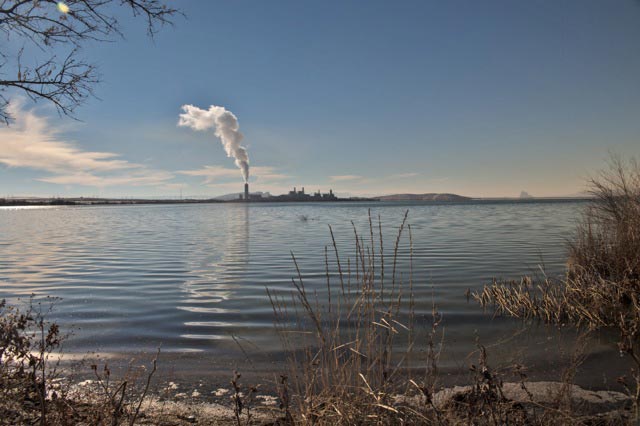 The Four Corners Generating Station, a coal-fired power plant near the San Juan Generating Plant. (Photo: ©2015 Julie Dermansky)
The Four Corners Generating Station, a coal-fired power plant near the San Juan Generating Plant. (Photo: ©2015 Julie Dermansky)
It is home to aging coal plants that generate power for much of the Southwest and California. These dirty coal plants helped create a giant methane cloud discovered by NASA.
The area is also home to significant cultural and natural sites, including the Bisti Badlands, Chaco Canyon, Mesa Verde National Park, and the Navajo Nation.
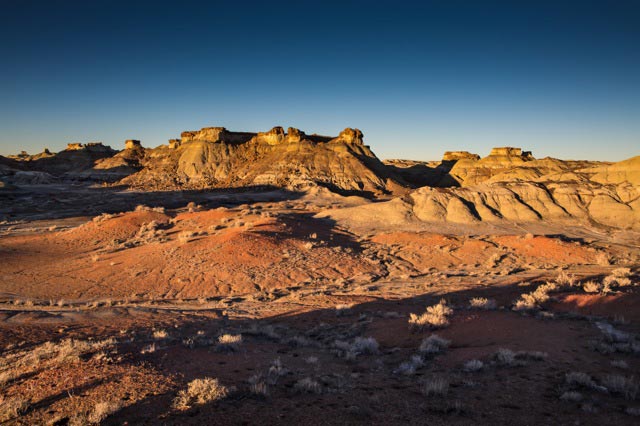 Bisti Badlands. (Photo: ©2015 Julie Dermansky)
Bisti Badlands. (Photo: ©2015 Julie Dermansky)
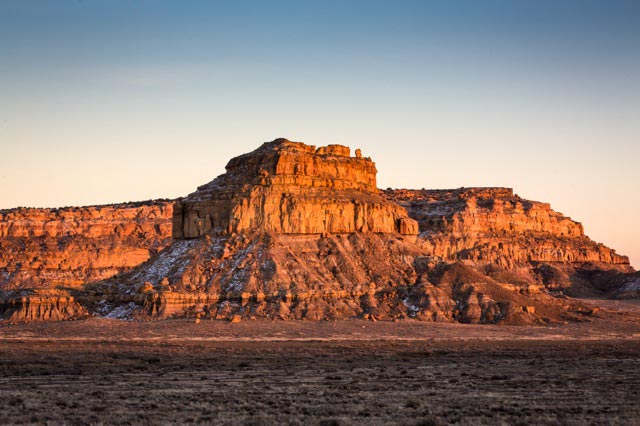 Fajada Butte in Chaco Canyon in Northern New Mexico. (Photo: ©2015 Julie Dermansky)
Fajada Butte in Chaco Canyon in Northern New Mexico. (Photo: ©2015 Julie Dermansky)
In a victory by environmental groups aided by the EPA, the San Juan Generating Station, operated by the Public Service Company of New Mexico (PNM), will shut down two of four units to make the plant compliant with the Clean Air Act Regional Haze Requirements.
To replace the energy the units produced, PNM had to come up with a plan that is cost-effective for ratepayers who will be footing the bill for the replacement power. The PNM plan calls for increasing its use of coal in the remaining units and utilizing more nuclear energy, along with smaller amounts of natural gas and a small amount of solar power.
It doubles down on dirty energy use, and effectively weds New Mexico ratepayers to coal and nuclear power for decades to come.
The state’s Public Regulation Commission (PRC) must weigh in on the PNM plan by mid-March.
A coalition of environmental and community groups, including New Energy Economy, Idle No More – Four Corners, Conservation Voters New Mexico, San Juan Citizens Alliance, New Mexico Interfaith Power and Light, Diné CARE, Southwest Organizing Project, Positive Energy Solar, and 30 other organizations urged the commission to reject PNM’s plan.
“The utility is putting its head in the sand and putting on blinders,” Mike Eisenfeld, New Mexico energy coordinator for San Juan Citizens Alliance, told DeSmogBlog. “Using coal is not a cheap way to produce electricity, and it imperils all of us who live here.” He doesn’t see the cost of coal in purely economical terms. Continued coal use raises questions about social and environmental justice in a region that Eisenfeld believes has sacrificed more than enough.
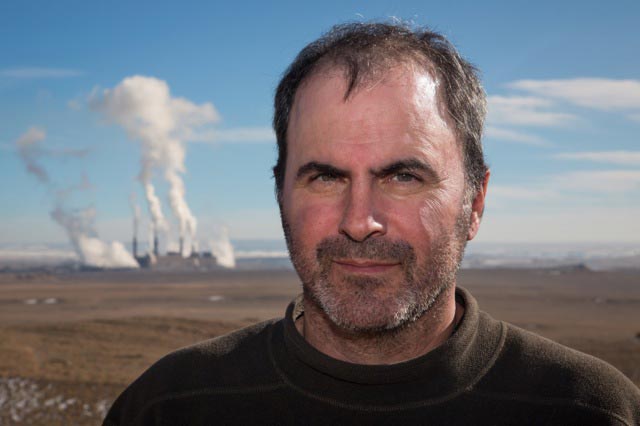 Mike Eisenfeld at the San Juan Generating Plant just outside of Farmington. (Photo: ©2015 Julie Dermansky)
Mike Eisenfeld at the San Juan Generating Plant just outside of Farmington. (Photo: ©2015 Julie Dermansky)
Diné activists Sarah White and her daughter Victoria Gutierrez, who live within 15 miles of two coal plants, were disappointed with PNM’s plan.
“Before the coal industry moved in, this area was like paradise,” White told DeSmogBlog. “Now the air is so bad people all around us are getting sick.“ She blames the coal plants for her asthma, a condition associated with air pollution.
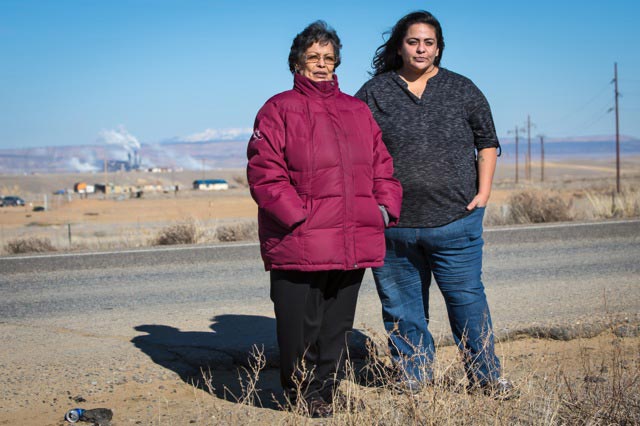 Sarah Jane White and Victoria Gutierrez, mother and daughter Diné environmental activists. (Photo: ©2015 Julie Dermansky)
Sarah Jane White and Victoria Gutierrez, mother and daughter Diné environmental activists. (Photo: ©2015 Julie Dermansky)
“Coal plants are shutting down across the country. They are seen as toxic assets. Coal is being replaced with solar and wind augmented with gas,” Mariel Nanasi, executive director of the environmental advocacy group New Energy Economy, told DeSmogBlog.
“New Mexico has huge renewable potential where renewables can even displace gas, so acquiring more sources of dirty, expensive coal and nuclear energy from aging plants as replacement power doesn’t make sense. PNM told us to trust them because they use a sophisticated computer model that proves their plan is the best plan — the most feasible and most cost-effective.”
Instead of trusting PNM, New Energy Economy spent $17,000 to lease Strategist®, the same proprietary program that PNM used, and hired an energy expert to analyze PNM’s methodology. The expert concluded that PNM manipulated the outcome of its analysis by omitting things like capital expenditures, and using constraints that would not let the program choose energy sources other than those the company wanted to utilize.
According to Nanasi, when Strategist® ran without constraints, PNM’s own analysis indicated that shutting the plant down completely would be the best economic solution. ”Our expert found that if the plant is closed by 2018 — and other energy sources like renewables were made available — the ratepayers would save $300 million over 20 years,” Nanasi said. “Our analysis concluded that ratepayers should not be investing anything further in coal because renewables and gas could be used — not because it is best for climate, jobs creation, and water reduction, but because it is cheaper than coal.”
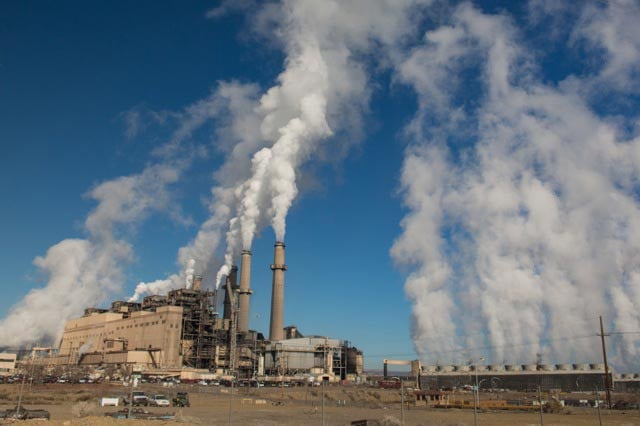 The San Juan Generating Plant. (Photo: ©2015 Julie Dermansky)
The San Juan Generating Plant. (Photo: ©2015 Julie Dermansky)
New Energy Economy also uncovered more than a $1.1 billion discrepancy in PNM’s project costs, projections the company acknowledged as an “error.” It also revealed that a “core group” of the state commissioners’ staff members who support PNM’s plan are former PNM employees, and may have conflicts of interest.
The PRC’s utility director, Dwight Lamberson, and accounting bureau chief Charles Gunter both receive pensions from PNM. Bruno Carrara, the commission’s electrical engineering bureau chief, owned 300 shares of PNM stock, which he sold after the issue was raised during the hearing. It is illegal for commissioners or commission staff to have financial interests in companies they regulate, excluding pensions.
Another problematic factor: PNM’s plan is reliant on using more coal, but fails to identify a source past 2017, when the only coal mine that feeds the plant could shut down. The coal PNM uses comes from the San Juan Mine, owned by BHP Billiton, an Australian coal mining company that filed documents with the state Public Regulation Commission showing it wants to get rid of the mine.
PNM has considered buying the mine, or finding another company to take it over but, as yet, has failed to do so. PNM is also considering investing in a new coalmine on Ute Mountain on Ute tribal lands. Any of these solutions require ratepayers to invest in a coal economy and all of the liabilities and costs that come with it.
More than 35 organizations testified against PNM’s plan at the weeks of hearings by the public commission in January. By the end of the hearings, a growing number of major stakeholders opposed PNM’s plan, including the City and County of Santa Fe, Bernalillo County, and the Albuquerque Bernalillo Water Authority.
The City of Farmington, NM and Utah Municipal Associated Power Systems were set to purchase some of the excess coal shares, left over from California utilities seeking to exit the partnership agreement at San Juan, but decided that the plant was too unreliable, the fuel supply and price uncertain, and that alternative generating resources were a better bet. This caused the Wall Street analyst agency Jefferies to downgrade its prediction for PNM’s stock outlook.
New Energy Economy has requested that the PRC commission reject PNM’s coal- and nuclear-heavy proposal because it fails to offer the most cost-effective program. The group alleges that the replacement proposal was not the result of a genuine stakeholder process, but rather a self-serving short-term plan that would shift the risk and liabilities of older coal and nuclear facilities from PNM shareholders to ratepayers. PNM must prove that its plan is in the public interest.
Prior to the January hearings, New Energy Economy alleged that two of the PRC commissioners were biased because of their improper relationship with PNM. New Energy Economy cited e-mails and many phone calls on private cell phones that proved joint attendance at sporting events by PNM and the regulators. Further, the e-mails disclosed dinner dates and weekly meetings where the parties conferred privately. The regulators voted on their own recusal and denied bias.
A similar cozy relationship was brought to light last year in California, leading to Pacific Gas & Electric firing three top officials and the California Public Utilities Commission President Michael Peevey asking his chief of staff to resign. Peevey himself later resigned amidst calls for a criminal investigation into his tenure as head of the CPUC.
“With a regulatory monopoly paradigm, there is no incentive to innovate or develop renewable energy — PNM gets both cost recovery and a guaranteed return on equity for its centralized energy generation resources,” Nanasi said. “PNM would rather reinvest in its own coal and nuclear plants, and enjoy the 11.4% return on these antiquated plants and the needed $100 million for pollution controls, than switch to less expensive solar and wind, which don’t continually require capital expenditures.”
“The system no longer works for consumers. We need it to change because the economics don’t make sense and, even more importantly, coal is the single biggest driver of climate change. It represents about 35% of our energy use, and 75% of our global warming pollution.”
New Energy Economy deposed whistleblower Gregory Smith, the former PNM manager of the San Juan Generating Station. His testimony details PNM self-serving behavior, Nanasi wrote in an email to DeSmogBlog:
Smith testified that PNM has been making unnecessary capital investments on which it return profits, while neglecting and withholding crucial maintenance expenditures on which they do not profit. He also claimed that PNM misled investors and the Securities and Exchange Commission. Smith explained why PNM is advancing nuclear and coal energy over solar for its replacement power because those resources require higher long-term capital investments on which PNM earns a profit, at the expense of New Mexico consumers. (Capital expenditures at the Palo Verde nuclear plant have been upwards of $3 billion in the last 20 years.) Smith also testified that PNM increased profits by risking worker safety and systematically tries to hide potentially damaging, controversial, or incriminating information to third parties by including PNM attorney names in e-mails and ‘sensitive’ documents to claim ‘attorney-client privilege’ even when there is no legitimate basis.
New Energy Economy has an alternative plan to replace the power from San Juan that relies on renewable energy. It is in line with the new Carbon Rule, is cheaper than PNM’s plan and will create more jobs, according to the group.
At a time when the Obama Administration is targeting coal because of its climate-altering consequences, the groups argue, to further invest in coal instead of transitioning to renewable energy is a step backwards. “PNM seems intent on perpetuating investment in toxic assets This represents an epic failure on a global scale to address political, social, environmental, and economic injustices,” San Juan Citizen Alliance’s Eisenfeld said.
If regulators approve PNM’s plan, New Energy Economy will challenge it in New Mexico’s Supreme Court.
Our most important fundraising appeal of the year
December is the most critical time of year for Truthout, because our nonprofit news is funded almost entirely by individual donations from readers like you. So before you navigate away, we ask that you take just a second to support Truthout with a tax-deductible donation.
This year is a little different. We are up against a far-reaching, wide-scale attack on press freedom coming from the Trump administration. 2025 was a year of frightening censorship, news industry corporate consolidation, and worsening financial conditions for progressive nonprofits across the board.
We can only resist Trump’s agenda by cultivating a strong base of support. The right-wing mediasphere is funded comfortably by billionaire owners and venture capitalist philanthropists. At Truthout, we have you.
We’ve set an ambitious target for our year-end campaign — a goal of $250,000 to keep up our fight against authoritarianism in 2026. Please take a meaningful action in this fight: make a one-time or monthly donation to Truthout before December 31. If you have the means, please dig deep.